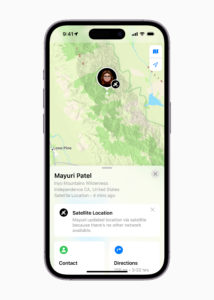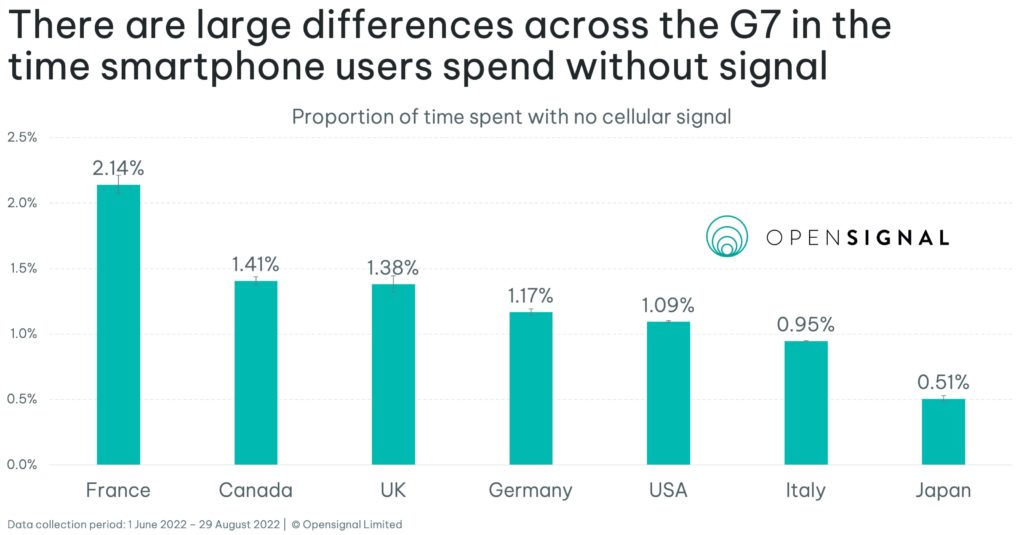In the wake of Wednesday’s announcement that Apple (NASDAQ:AAPL) will partner with Globalstar (NYSE American: GSAT), other companies are announcing initiatives to close the final connectivity gap by taking advantage of ubiquitous satellite connectivity to connect to mobile phones.
- Starlink and T-Mobile US (NASDAQ: TMUS) announced a partnership to deliver text messaging to T-Mobile subscribers in cellular dead zones by the end of 2023, followed by voice and data coverage.
- Also on Wednesday, internet of things (IoT) provider Skylo announced that it is already providing messaging services direct from IoT devices for satellite. For example, it works with IoT integrator Tag-N-Trac to enable global connectivity for the Smart Sense tag to track assets worldwide, providing visibility into supply chains.
- SpaceX Chief Executive Elon Musk on Thursday tweeted that Starlink is also working with Apple. “We’ve had some promising conversations with Apple about Starlink connectivity,” he tweeted. “For sure, closing link from space to phone will work best if phone software [and] hardware adapt to space-based signals [as opposed to] Starlink purely emulating cell tower.”
-
Google (NASDAQ:GOOG) is working on adding satellite connectivity to Android phones, SVP Hiroshi Lockheimer tweeted earlier this month. “[W]e’re designing for satellites,” he tweeted. “Excited to support our partners in enabling all of this in the next version of Android!”
Android version 14 will be released in 2023, according to reports. Google’s partner, if it has one, could be Iridium (NASDAQ:IRDM), which has “entered into a development agreement to enable Iridium’s technology in smartphones,” according to a July filing with the Securities and Exchange Commission.
- Manufacturer Huawei (SZ: 002502) is also working on satellite texting and location services, according to reports.
Specialized constellation builders are also active. Privately held Lynk Global has several patents covering processes for satellite-to-cellphone links. AST SpaceMobile (NASDAQ:ASTS) is nearly ready to launch its BlueWalker 3 satellite. The Bluewalker 3’s phased array antenna is one of the largest to be launched to low Earth orbit, Chairman and CEO Abel Avellan said last year in an earnings call.
Satellite-cell phone connectivity is for remote areas
Although bandwidth is limited, there appears to be demand for satellite services for cell phones.
In the U.S., cell phone users are only without a signal just over 1% of the time, according to data from cellular network research firm Opensignal. Sometimes, the loss of signal occurs in rural areas, but in other cases it occurs when the user is inside a building, Ian Fogg, Opensignal vice president of analysis, told Connectivity Business News. Satellite solves the problem of remote areas whereas network operators and real estate owners will solve the problem of in-building connectivity.
The announcements on the heels of the Apple-Globalstar deal reveal fascinating questions about the value chain, Fogg added. Will these satellite-to-cellphone services be contracted by an operating system designer such as Google, by a handset maker such as Samsung (KRX:005930), or by the mobile network operator?
The announcements all are occurring before the release of chips and devices supporting the latest version of 5G, 3GPP release 17, which contains standards for connecting terrestrial networks to non-terrestrial networks (NTN).
“This is just a stepping stone,” Fogg said. Once devices reach the market that support 5G NTN standards, “there will be a lot more devices and manufacturers and vendors with support for satellite connectivity on phones.”
What’s next for Apple and satellite service
Apple won’t want to charge for emergency connectivity and risk its customers’ deaths, Fogg said. So although the Emergency SOS service may always be free, Apple could announce paid satellite-to-cellphone service tiers.
Apple’s next announcement could be in mid-October, he said, as the company unveils new personal computers.












